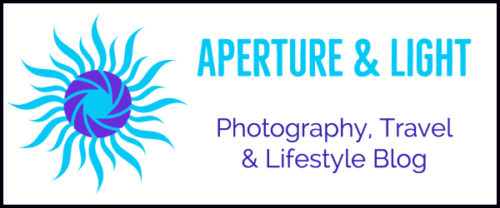If someone told me years ago that I’d be writing a review of Nikon’s 24-70mm f/2.8E ED VR lens, they would have gotten the Scooby Doo face. When the photography bug chirped, it was all about birds, nature, wildlife and macros. Telephotos and macro lenses popped on and off my first camera like popcorn.
Nikon’s 24-70mm 2.8E ED VR is my workhorse lens since 2015. It’s a battle tested lens that’s with me just about 80% of the time.
Sheen Watkins
Over time, my eye expanded across the landscape surrounding my subjects. Pun absolutely intended. The midrange kit lens (24-85) started to make a frequent appearance on my camera at sunsets, on travels and on the street. Then one day, the epiphany happened! I wasn’t just a bird and macro photographer.

I was also a photographer of landscapes, street, adventure and travels. For these images today, I rely on three Nikon lenses purchased over time. These include: Nikon’s 14-24mm 2.8 (hard to find right now), Nikon’s 24-70mm 2.8 f/2.8E ED VR and the mid range to telephoto 70-200mm 2.8 both through Amazon.
If I can’t make a decision on ‘which lens to take’ it’s usually Nikon’s 24-70mm 2.8E ED VR for general photography. I’m sharing my user experience with this lens in the field.
All Purpose Lens = Workhorse Lens
Before I do a deep dive into a summary of the good stuff and the not-as-good stuff, where do I use this lens? Just about everywhere. In addition to landscapes, it’s takes on new life with flowers. When I need a big depth of field for a flower or when I want soft backgrounds, it captures details beautifully at f/2.8 to f/16. Or, if I’m lucky enough and a squirrel decides to give me an up close portrait, the background bokeh adds a little something extra.

For people, I use it at 50mm -70mm for optimum rendering and it creates lovely portraits. (A 24mm of a human up close adds a bit of feature distortion – not because of this lens, due to the nature of wide abd super-wide focal lengths).
Lens Review of Nikon’s 24-70mm f/2.8E ED VR
Here’s a few technical specs behind the lens. Its’ constant aperture of f/2.8 means you can use the aperture of 2.8 across the lens’ focal distances. Image quality and sharpness holds all the way to smaller apertures (ex. f/22).
The autofocus motor is quiet, speedy and accurate both day and in low-light. My images are sharp with excellent color contrast.
In high contrast situations, such as bright sunset skies with darker foregrounds, I either bracket or use a graduated neutral density filter. There are times that no matter which lens is on your camera, the brights are very bright. (Note: I find that the Nikon 14-24mm lens manages these situations better than both the 24-70 and 70-200mm lenses)
Nikon’s 24-70mm f/2.8E ED VR – the good stuff:
Is this lens the right one for you? The following highlights the lens strengths.
- Very sharp, fast, quiet focusing
- High image quality across the focal distance range
- Versatile for many types of photography – wide angle to portraits, landscapes, streets, closeups, travels
- Solid vibration reduction where your shutter speed is 1/50 and faster. With slower shutter speeds a tripod is suggested for maintaining image sharpness.
- Sturdy and well-built, handles extreme temperatures very well. Reminder: When shooting in extreme conditions to let your camera and lenses normalize indoors before taking out of your camera bag (unless your camera was exposed to water, then dry immediately).

The not as good stuff:
- Lens hood – I’m always in a hurry to photograph my subjects. Sometimes the lens hood is a little too precise when placing it on your lens. I always have to look at the hood and camera for lining up, otherwise it ends up a bit crooked.
- Weight – High quality zoom lenses are heavier across all lens manufacturers. With the high quality glass that covers the range, it’s weightier (just under 39 ounces) than kit or prime lenses.
- Bright, bright sky performance – Over time, we better understand our lenses and how to get the most out of them. This lens is an awesome performer across diverse lighting. For me to get the images I like in bright contrasty skies at sunset, I actively adjust settings and/or use filters.
- Cost – High quality glass combined with convenience has a high quality price tag. Primes (fixed focal length) are very sharp, fast and cost effective. However, there’s a convenience factor of zooming with the lens versus your feet.
When I originally purchased this lens, I was jazzed. Years later, I’m still enjoying this lens on a daily basis. Would I purchase this lens again? Absolutely!
For my camera review of Nikon’s D500: Nikon D500 Camera Review & Wildlife Photography: 4 Years Later


2 comments
Nice concise review Sheen. I’ve enjoyed that lens for much longer…as well as the 70-200. I have 4 Nikon lenses and if I take a poor photo it’s almost never the fault of the lens…
Hi Doug – thank you for your comments! Yes…so agree – it’s never the fault of the lens – it’s up to us to understand how to use and optimize. The 70-200 is awesome too….when you need that distance, there’s no substitute. Have a great day!
Comments are closed.